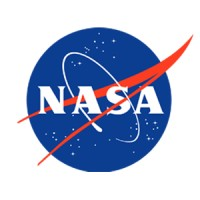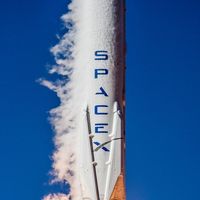Boeing's Starliner Delays Cast Shadow on NASA's Crew-9 Mission
August 7, 2024, 9:32 am

Location: United States, Illinois, Chicago
Employees: 10001+
Founded date: 1916
Total raised: $25.01B

Location: United States, Maryland, Greenbelt
Employees: 10001+
Founded date: 1958
Total raised: $25.7B

Location: United States, District of Columbia, Washington
Employees: 5001-10000
Founded date: 2002
Total raised: $7.53B
NASA's plans for the Crew-9 mission have hit a snag. The delay stems from ongoing issues with Boeing's Starliner spacecraft, which remains docked at the International Space Station (ISS). This situation has forced NASA to push back the launch of Crew-9, originally scheduled for August 18, to September 24. The ripple effects of Boeing's troubles are felt across the space industry, raising questions about reliability and future missions.
Boeing's Starliner was designed to be a key player in NASA's Commercial Crew Program. This initiative aims to transport astronauts to the ISS using private spacecraft. While SpaceX has successfully completed multiple missions with its Crew Dragon, Boeing's Starliner has yet to make its mark. The spacecraft's journey has been fraught with complications, leaving it stranded in low Earth orbit.
The delay in the Crew-9 mission is not just a scheduling issue. It reflects deeper concerns about Boeing's capabilities. NASA's decision to postpone the launch was not taken lightly. The agency is prioritizing safety and thoroughness over speed. The Starliner must undergo rigorous testing and evaluation before it can return to Earth. Any misstep could have catastrophic consequences, including a potential collision with the ISS.
The stakes are high. NASA's Crew-9 mission is set to carry four astronauts to the ISS, including notable figures like Zena Cardman and Stephanie Wilson. Their six-month stay is crucial for ongoing research and international collaboration in space. However, the uncertainty surrounding Starliner's return flight complicates matters. NASA officials are still weighing the risks associated with the spacecraft's performance.
Boeing's challenges are not new. The Starliner has faced a series of setbacks since its inception. Technical glitches and scheduling conflicts have plagued its development. The spacecraft's most recent test flight in 2019 ended prematurely due to software issues. Since then, Boeing has been working to rectify these problems, but progress has been slow.
In contrast, SpaceX has established itself as a reliable partner for NASA. The company has successfully launched multiple missions, demonstrating the effectiveness of its Crew Dragon spacecraft. SpaceX's ability to meet deadlines and deliver results has set a high bar for Boeing. As a result, the pressure is mounting on Boeing to deliver a functional spacecraft.
The current situation raises questions about the future of NASA's Commercial Crew Program. With SpaceX proving its mettle, Boeing's delays could jeopardize its standing in the program. NASA has invested significant resources into both companies, but the clock is ticking. If Boeing cannot resolve its issues, it risks losing its place in the competitive landscape of space exploration.
The implications extend beyond Boeing and NASA. The commercial space industry is evolving rapidly. Companies are vying for contracts and partnerships, and reliability is paramount. Delays and failures can tarnish reputations and hinder future opportunities. For Boeing, the stakes are particularly high. The company has a long history in aerospace, but its recent struggles threaten to overshadow its legacy.
As NASA navigates this turbulent period, it must balance innovation with caution. The agency's commitment to safety is commendable, but it also means delays in launching critical missions. The Crew-9 mission is essential for maintaining a human presence in space and advancing scientific research. However, without a reliable spacecraft, those goals remain out of reach.
The delay of Crew-9 serves as a reminder of the complexities involved in space travel. It is not just about launching rockets; it is about ensuring the safety of astronauts and the integrity of missions. NASA's decision to postpone the launch underscores the importance of thorough testing and evaluation. Rushing into a launch could have dire consequences.
Looking ahead, the future of Boeing's Starliner remains uncertain. The company must demonstrate its ability to deliver a functional spacecraft that meets NASA's stringent requirements. Until then, the shadow of delay looms large over the Crew-9 mission. The space community watches closely, eager for updates and hopeful for progress.
In conclusion, the delay of NASA's Crew-9 mission highlights the challenges facing Boeing's Starliner. As the commercial space race heats up, reliability and safety are paramount. NASA's commitment to thorough evaluation is commendable, but it also means delays in critical missions. The future of Boeing in the Commercial Crew Program hangs in the balance, and the stakes could not be higher. The journey to the stars is fraught with obstacles, but the pursuit of knowledge and exploration must continue.
Boeing's Starliner was designed to be a key player in NASA's Commercial Crew Program. This initiative aims to transport astronauts to the ISS using private spacecraft. While SpaceX has successfully completed multiple missions with its Crew Dragon, Boeing's Starliner has yet to make its mark. The spacecraft's journey has been fraught with complications, leaving it stranded in low Earth orbit.
The delay in the Crew-9 mission is not just a scheduling issue. It reflects deeper concerns about Boeing's capabilities. NASA's decision to postpone the launch was not taken lightly. The agency is prioritizing safety and thoroughness over speed. The Starliner must undergo rigorous testing and evaluation before it can return to Earth. Any misstep could have catastrophic consequences, including a potential collision with the ISS.
The stakes are high. NASA's Crew-9 mission is set to carry four astronauts to the ISS, including notable figures like Zena Cardman and Stephanie Wilson. Their six-month stay is crucial for ongoing research and international collaboration in space. However, the uncertainty surrounding Starliner's return flight complicates matters. NASA officials are still weighing the risks associated with the spacecraft's performance.
Boeing's challenges are not new. The Starliner has faced a series of setbacks since its inception. Technical glitches and scheduling conflicts have plagued its development. The spacecraft's most recent test flight in 2019 ended prematurely due to software issues. Since then, Boeing has been working to rectify these problems, but progress has been slow.
In contrast, SpaceX has established itself as a reliable partner for NASA. The company has successfully launched multiple missions, demonstrating the effectiveness of its Crew Dragon spacecraft. SpaceX's ability to meet deadlines and deliver results has set a high bar for Boeing. As a result, the pressure is mounting on Boeing to deliver a functional spacecraft.
The current situation raises questions about the future of NASA's Commercial Crew Program. With SpaceX proving its mettle, Boeing's delays could jeopardize its standing in the program. NASA has invested significant resources into both companies, but the clock is ticking. If Boeing cannot resolve its issues, it risks losing its place in the competitive landscape of space exploration.
The implications extend beyond Boeing and NASA. The commercial space industry is evolving rapidly. Companies are vying for contracts and partnerships, and reliability is paramount. Delays and failures can tarnish reputations and hinder future opportunities. For Boeing, the stakes are particularly high. The company has a long history in aerospace, but its recent struggles threaten to overshadow its legacy.
As NASA navigates this turbulent period, it must balance innovation with caution. The agency's commitment to safety is commendable, but it also means delays in launching critical missions. The Crew-9 mission is essential for maintaining a human presence in space and advancing scientific research. However, without a reliable spacecraft, those goals remain out of reach.
The delay of Crew-9 serves as a reminder of the complexities involved in space travel. It is not just about launching rockets; it is about ensuring the safety of astronauts and the integrity of missions. NASA's decision to postpone the launch underscores the importance of thorough testing and evaluation. Rushing into a launch could have dire consequences.
Looking ahead, the future of Boeing's Starliner remains uncertain. The company must demonstrate its ability to deliver a functional spacecraft that meets NASA's stringent requirements. Until then, the shadow of delay looms large over the Crew-9 mission. The space community watches closely, eager for updates and hopeful for progress.
In conclusion, the delay of NASA's Crew-9 mission highlights the challenges facing Boeing's Starliner. As the commercial space race heats up, reliability and safety are paramount. NASA's commitment to thorough evaluation is commendable, but it also means delays in critical missions. The future of Boeing in the Commercial Crew Program hangs in the balance, and the stakes could not be higher. The journey to the stars is fraught with obstacles, but the pursuit of knowledge and exploration must continue.